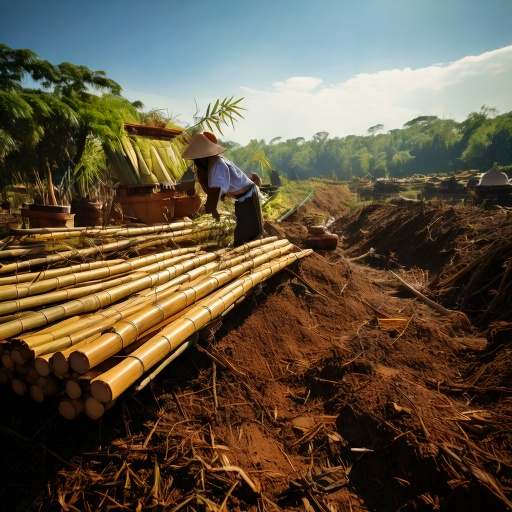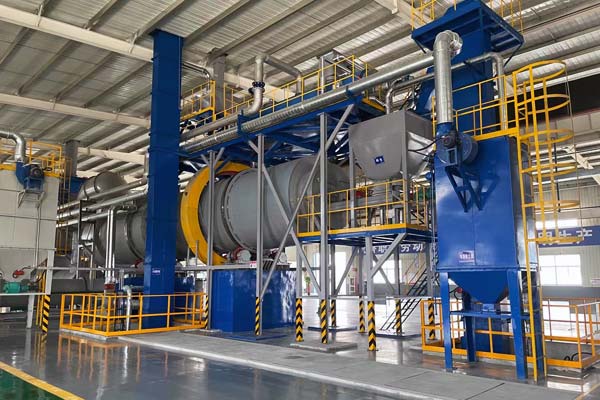Biomass Carbonization: Creating High-Value Biochar
Biomass Carbonization is the thermal process that transforms organic waste into Biochar, a stable, carbon-rich solid product. This step is integral to the Ecoladang circular economy model, serving as both our primary method of long-term carbon sequestration and the foundation for our high-margin commercial products.
While Gasification (Pillar 1) focuses on generating immediate energy (Syngas), Carbonization focuses on generating a physical, permanent asset—the Biochar—that drives value across the agricultural and commercial pillars of the ecosystem.
While Gasification (Pillar 1) focuses on generating immediate energy (Syngas), Carbonization focuses on generating a physical, permanent asset—the Biochar—that drives value across the agricultural and commercial pillars of the ecosystem.
The Process: Stabilizing Carbon for Long-Term Value
Carbonization is fundamentally a slow or controlled thermal decomposition process designed to maximize the fixed carbon content of the residue.
Technical Steps
- Feedstock Input:The process utilizes residual biomass from the farm, often after initial drying or as the solid char byproduct from the Gasification unit, ensuring Zero Waste in the conversion pathway.
- Controlled Heating:The biomass is heated to moderate temperatures, typically between 250C and 700C, in an oxygen-starved environment. Technologies like slow pyrolysis or Hydrothermal Carbonization (HTC) are employed to optimize for high carbon retention.
- Solid Transformation:The heat drives off moisture and volatile organic compounds (which can be captured and used as additional thermal energy). This leaves behind a highly porous structure composed of over 70% fixed carbon.
- Biochar Output:The final product is Biochar, a robust and chemically stable form of carbon that actively resists natural decomposition, making it highly effective for sequestration.

Our strategy includes leveraging technologies, potentially including patented systems from partners like MyBamboo, to ensure the carbonization process is efficient, scalable, and yields consistently high-quality biochar tailored to specific end-use applications (soil amendment vs. activated carbon precursor).
The resulting Biochar is a versatile, high-value asset that generates returns across three distinct areas:
- Enhances Water Retention: Acting like a sponge, it holds water and nutrients, significantly improving drought resistance.
- Boosts Crop Yields:It stabilizes soil pH and provides an ideal habitat for beneficial microbial communities, directly contributing to higher and more consistent crop productivity.
By stabilizing the carbon and preventing it from releasing back into the atmosphere as CO or methane, the Carbonization process provides a pathway for verified, long-term carbon credit generation. This positions every Ecoladang farm as a leader in sustainability and creates a separate, tradable environmental revenue stream.
High-quality Biochar serves as the essential input material for the highest-value product stream: Activated Carbon Production. This link ensures that a basic agricultural byproduct can be upgraded into a globally traded, premium industrial commodity, maximizing the overall economic potential of the waste.

Permanent Sequestration
Converts rapidly decaying organic carbon into a stable, non-degradable form (Biochar). - Generates high-quality, certifiable Carbon Credits and meets global sustainability mandates.
Soil Enhancement
Creates a super-performing soil amendment that retains nutrients and water. - Increases crop yields (Pillar 3) and reduces dependency on synthetic fertilizers and irrigation.
High-Value Precursor
Biochar is the low-cost feedstock for producing high-margin Activated Carbon. - Establishes a premium, non-agricultural revenue channel (Pillar 5) for the franchise unit.
Thermal Efficiency
Volatile gases released during the carbonization process can be captured. Used as a supplementary energy source for the Gasification unit or other thermal needs on the farm.
Core Infrastructure
The entire gasification unit is integrated with the PCDS (Pillar 2) where the AI models and software services optimize feedstock rates, gas quality, and power output in real-time. This digital integration maximizes fuel conversion efficiency and ensures stable 400V power delivery precisely when and where it is needed.
The next stage in this pillar, Biomass Carbonization, takes the solid output from this process and turns it into our first high-value commercial and agricultural product. Do you want to review and expand that page next?